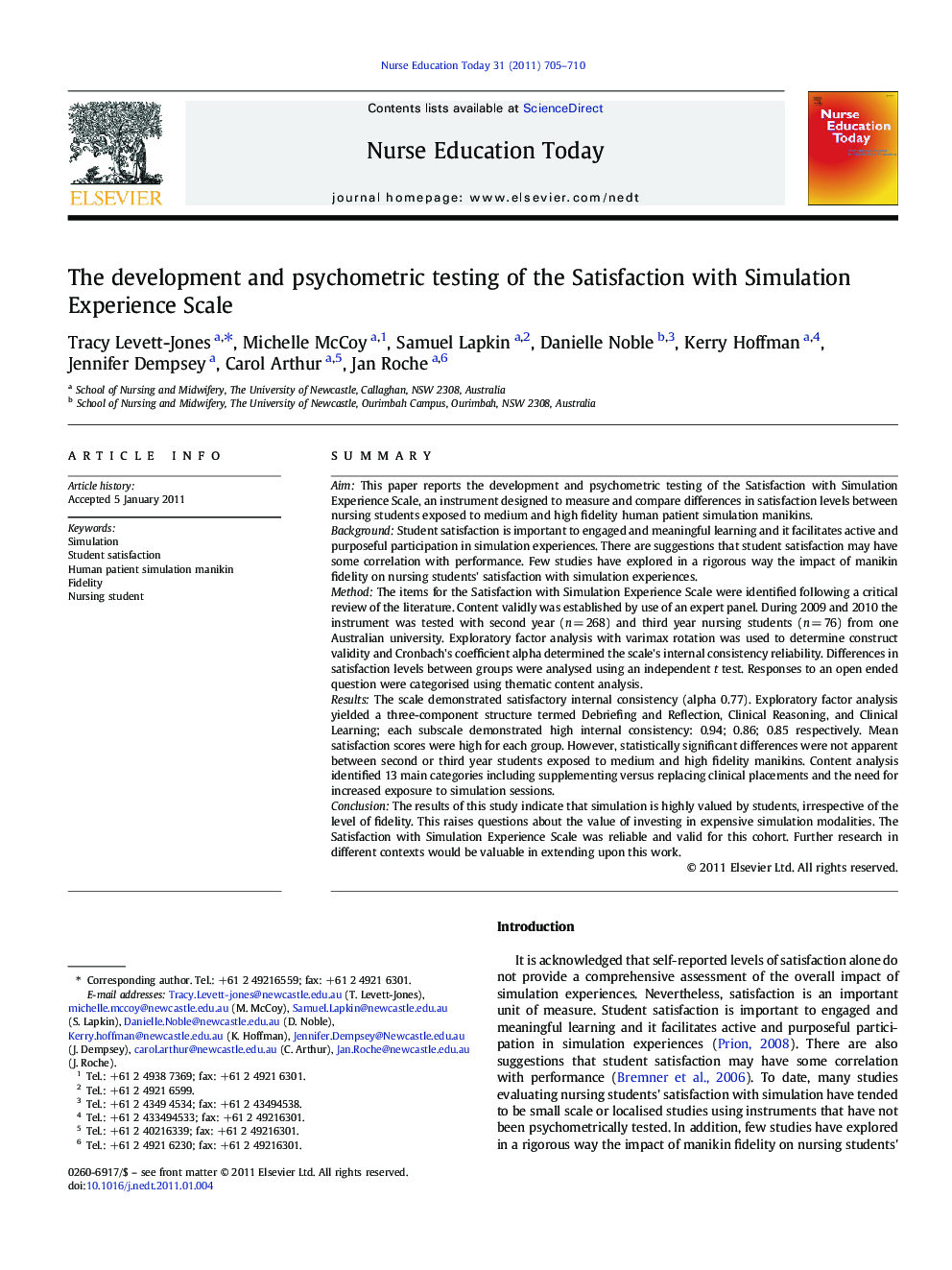| کد مقاله | کد نشریه | سال انتشار | مقاله انگلیسی | نسخه تمام متن |
|---|---|---|---|---|
| 368890 | 621599 | 2011 | 6 صفحه PDF | دانلود رایگان |

SummaryAimThis paper reports the development and psychometric testing of the Satisfaction with Simulation Experience Scale, an instrument designed to measure and compare differences in satisfaction levels between nursing students exposed to medium and high fidelity human patient simulation manikins.BackgroundStudent satisfaction is important to engaged and meaningful learning and it facilitates active and purposeful participation in simulation experiences. There are suggestions that student satisfaction may have some correlation with performance. Few studies have explored in a rigorous way the impact of manikin fidelity on nursing students' satisfaction with simulation experiences.MethodThe items for the Satisfaction with Simulation Experience Scale were identified following a critical review of the literature. Content validly was established by use of an expert panel. During 2009 and 2010 the instrument was tested with second year (n = 268) and third year nursing students (n = 76) from one Australian university. Exploratory factor analysis with varimax rotation was used to determine construct validity and Cronbach's coefficient alpha determined the scale's internal consistency reliability. Differences in satisfaction levels between groups were analysed using an independent t test. Responses to an open ended question were categorised using thematic content analysis.ResultsThe scale demonstrated satisfactory internal consistency (alpha 0.77). Exploratory factor analysis yielded a three-component structure termed Debriefing and Reflection, Clinical Reasoning, and Clinical Learning; each subscale demonstrated high internal consistency: 0.94; 0.86; 0.85 respectively. Mean satisfaction scores were high for each group. However, statistically significant differences were not apparent between second or third year students exposed to medium and high fidelity manikins. Content analysis identified 13 main categories including supplementing versus replacing clinical placements and the need for increased exposure to simulation sessions.ConclusionThe results of this study indicate that simulation is highly valued by students, irrespective of the level of fidelity. This raises questions about the value of investing in expensive simulation modalities. The Satisfaction with Simulation Experience Scale was reliable and valid for this cohort. Further research in different contexts would be valuable in extending upon this work.
Journal: Nurse Education Today - Volume 31, Issue 7, October 2011, Pages 705–710